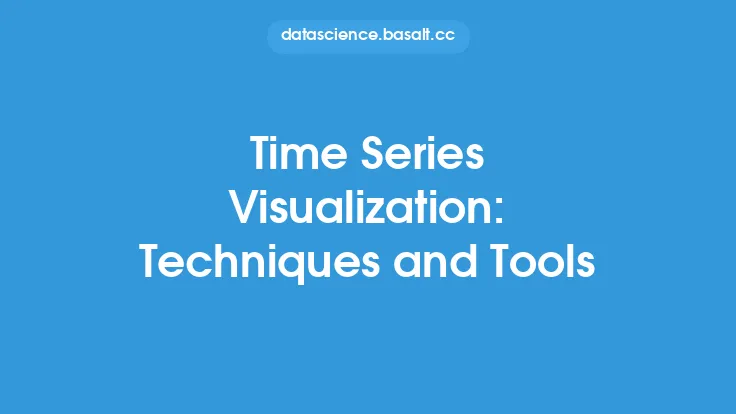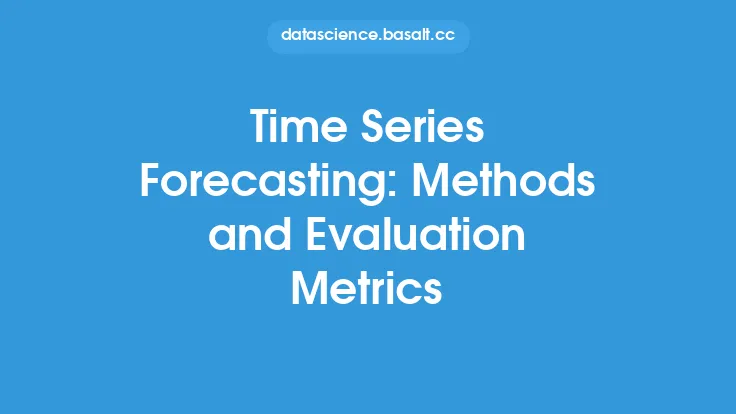Exponential smoothing is a popular and widely used forecasting technique in time series analysis. It is a simple, yet effective method for forecasting future values in a time series, based on the weighted average of past observations. The technique was first introduced by Charles Holt in the 1950s and has since become a fundamental tool in the field of statistics and forecasting.
Introduction to Exponential Smoothing
Exponential smoothing is a family of methods that can be used to forecast future values in a time series. The basic idea behind exponential smoothing is to give more weight to recent observations and less weight to older observations. This is done by using a smoothing parameter, usually denoted by alpha (α), which determines the amount of weight given to each observation. The smoothing parameter is a value between 0 and 1, where 0 gives equal weight to all observations and 1 gives all the weight to the most recent observation.
Simple Exponential Smoothing (SES)
Simple exponential smoothing is the most basic form of exponential smoothing. It is used for time series that have no trend or seasonality. The SES method uses the following formula to forecast future values:
F(t+1) = α * Y(t) + (1-α) * F(t)
where F(t+1) is the forecast for the next period, Y(t) is the actual value for the current period, F(t) is the forecast for the current period, and α is the smoothing parameter.
Holt's Method
Holt's method is an extension of simple exponential smoothing that can handle time series with a trend. It uses two smoothing parameters, alpha (α) and beta (β), to forecast future values. The first parameter, alpha, is used to smooth the level of the time series, while the second parameter, beta, is used to smooth the trend. The Holt's method uses the following formulas to forecast future values:
L(t) = α * Y(t) + (1-α) * (L(t-1) + T(t-1))
T(t) = β * (L(t) - L(t-1)) + (1-β) * T(t-1)
F(t+1) = L(t) + T(t)
where L(t) is the level of the time series at time t, T(t) is the trend of the time series at time t, and F(t+1) is the forecast for the next period.
Holt-Winters Method
The Holt-Winters method is an extension of Holt's method that can handle time series with both trend and seasonality. It uses three smoothing parameters, alpha (α), beta (β), and gamma (γ), to forecast future values. The first parameter, alpha, is used to smooth the level of the time series, the second parameter, beta, is used to smooth the trend, and the third parameter, gamma, is used to smooth the seasonality. The Holt-Winters method uses the following formulas to forecast future values:
L(t) = α * (Y(t) / S(t-m)) + (1-α) * (L(t-1) + T(t-1))
T(t) = β * (L(t) - L(t-1)) + (1-β) * T(t-1)
S(t) = γ * (Y(t) / L(t)) + (1-γ) * S(t-m)
F(t+1) = (L(t) + T(t)) * S(t+1-m)
where L(t) is the level of the time series at time t, T(t) is the trend of the time series at time t, S(t) is the seasonality of the time series at time t, and F(t+1) is the forecast for the next period.
Choosing the Smoothing Parameters
The choice of smoothing parameters is critical in exponential smoothing. The parameters can be chosen using a variety of methods, including visual inspection, mean squared error (MSE), and mean absolute error (MAE). The most common method is to use a grid search to find the optimal values of the parameters that minimize the MSE or MAE.
Advantages and Disadvantages of Exponential Smoothing
Exponential smoothing has several advantages, including its simplicity, ease of implementation, and ability to handle time series with trend and seasonality. However, it also has some disadvantages, including its sensitivity to outliers, its assumption of a constant variance, and its inability to handle non-linear relationships.
Real-World Applications of Exponential Smoothing
Exponential smoothing has a wide range of real-world applications, including demand forecasting, sales forecasting, inventory control, and financial forecasting. It is widely used in industries such as retail, manufacturing, and finance, where accurate forecasting is critical for making informed decisions.
Conclusion
Exponential smoothing is a simple and effective forecasting technique that can be used to forecast future values in a time series. It is a family of methods that can handle time series with trend and seasonality, and it has a wide range of real-world applications. The choice of smoothing parameters is critical, and the method has several advantages and disadvantages. Overall, exponential smoothing is a powerful tool that can be used to improve forecasting accuracy and inform decision-making.





